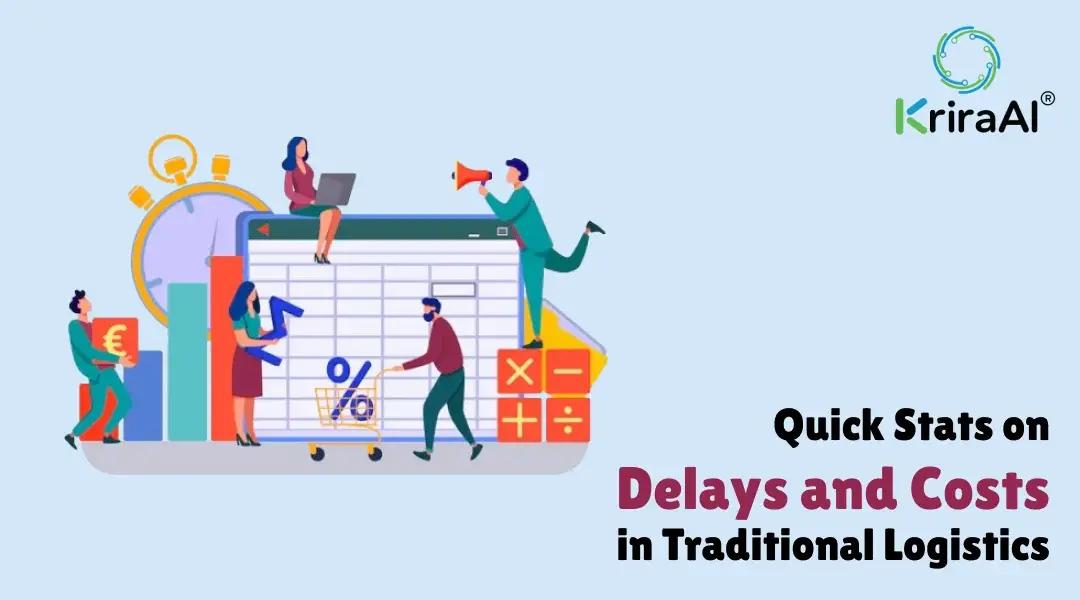AI in Logistics: Cutting Delivery Times & Costs
Let’s be real for a second.
If you’re running logistics ops right now, you're likely juggling delays, rising fuel prices, warehouse chaos, and customers who think "next day" means “next hour.” You’ve heard AI might help. But most of what’s out there? Feels like it’s written by people who’ve never stepped inside a distribution center.
I have. I’ve worked with logistics teams across India who were drowning in spreadsheets, reactive planning, and aging systems. And I’ve watched AI—real, functional AI—help them go from firefighting to forecasting.
So let’s talk, not like a brochure, but like two professionals trying to get shipments out the door faster, cheaper, and with fewer headaches.
Why AI Is Revolutionizing Logistics
AI isn’t magic. It’s machinery. But it’s machinery that thinks.
And in logistics, where millions of micro-decisions—from inventory placement to delivery sequencing—make or break margins, a machine that thinks faster than a human? That’s a force multiplier.
We're seeing AI disrupt logistics in five key areas:
Planning and scheduling
Real-time decision-making
Predictive demand forecasting
Inventory and warehouse optimization
Route and fleet management
But before we dive into solutions, let's zoom out.
Quick Stats on Delays and Costs in Traditional Logistics

25–30% of logistics costs are tied to inefficiencies like fuel waste, idle time, and poor route planning.
Last-mile delivery accounts for nearly 53% of total shipping costs.
In India alone, delivery delays cost e-commerce companies ₹5,000+ crore annually, primarily due to outdated systems and lack of predictive tools.
Feeling the pinch? You’re not alone.
The Real Cost of Delivery Delays
Here’s what they don’t show on dashboards:
Customer Churn: 1 delayed delivery = 1 lost customer (especially in e-com).
Operational Chaos: Missed handovers, re-assignments, overstaffing during peaks.
Burned Fuel and Time: Idle trucks. Backtracking. Missed delivery windows.
I’ve seen operations teams burn out from the constant firefighting. It’s not sustainable. AI doesn’t eliminate the chaos—but it does give you a map through it.
How AI is Reshaping Logistics Operations
Let’s break it down.
Real-Time Data Processing
Your TMS spits out numbers. But it doesn’t think. AI systems ingest GPS, weather, traffic, and warehouse data—and make real-time adjustments. Think Uber surge pricing, but for fleet decisions.
Machine Learning for Predictive Planning
One of our clients, a Pune-based 3PL, reduced missed deliveries by 28% using ML models that forecasted delays before they happened. Not theory. Deployed.
AI in Warehouse Automation
We’ve integrated AI vision systems to track misplaced inventory, auto-count stock, and even flag packaging errors before shipment. Manual QC? Slashed by half.
Cutting Delivery Times with AI
Now we’re getting into the meat.
Smart Route Optimization
You’re not just finding the shortest route. You’re finding the smartest. AI factors in real-time weather, road closures, traffic, vehicle health, and driver patterns. One KriraAI route optimization deployment shaved 17% off delivery time across 5 cities.
Last-Mile Delivery Improvements
AI can auto-cluster drop-offs, predict failed delivery attempts, and dynamically reassign them. Say goodbye to failed deliveries due to “no one home.”
Drones & Autonomous Vehicles
Are they everywhere? No. But for specific warehouse-to-warehouse hops and rural drops? They’re being piloted right now in India. Quietly. Efficiently.
Reducing Operational Costs with AI
Here’s where the CFO starts leaning forward.
Labor Cost Optimization
One client reduced overtime payouts by 22% after implementing AI-based shift forecasting. No more guessing peak loads.
Fuel Efficiency
Fuel is bleeding logistics dry. AI reduces detours, idling, and empty miles. It’s not just about distance. It’s about intentional distance.
AI in Demand Forecasting & Inventory
No more warehouses flooded with SKUs no one needs. AI predicts order spikes and slumps with surprising accuracy—especially during festive seasons when human intuition tends to fail.
AI Use Cases in Leading Logistics Companies
Let’s name names.
Amazon: Uses AI for everything—from robotic picking arms to drone deliveries.
DHL: Deployed AI chatbots and predictive delivery systems.
FedEx: Predictive weather-based rerouting.
Maersk: AI to optimize shipping container load and route logistics globally.
These aren’t stunts. They’re systemic. And while your ops might not have their scale—you now have access to similar tech through AI platforms like what we build at KriraAI.
Benefits Beyond Cost & Time
AI gives you more than just numbers.
Sustainability
Fewer miles. Less fuel. Lower emissions. A cleaner supply chain.
Customer Experience
On-time deliveries. Transparent tracking. Proactive alerts. That’s trust built at scale.
Error Reduction
From fewer wrong shipments to better inventory accuracy—AI reduces “oops” moments that kill margins.
The Future of AI in Logistics
What’s coming?
AI Agents: Think autonomous ops managers. Already piloting with select clients.
Predictive Supply Chains: Systems that act before you think.
Hyper-personalized delivery: AI tailors drop schedules based on individual customer behavior.
Conclusion
AI in logistics isn’t a moonshot. It’s a map.
A map away from burnout, away from bottlenecks, and toward operations that breathe—efficiently, intelligently, and profitably.
I’ve helped companies make that leap. It starts with a conversation. If you're ready, so are we.
FAQs
No. True AI agents can make operational decisions, trigger workflows, and coordinate between systems—autonomously.
Some clients see improvements in as little as 6–8 weeks, especially in route optimization and demand forecasting.
Not necessarily. We often integrate AI on top of legacy systems with middleware and data connectors.
Absolutely. Modular, API-first AI tools can now be scaled even for mid-sized logistics firms.
Route logs, delivery history, warehouse inventory, GPS data, and delivery feedback—clean, structured data is key.

CEO
